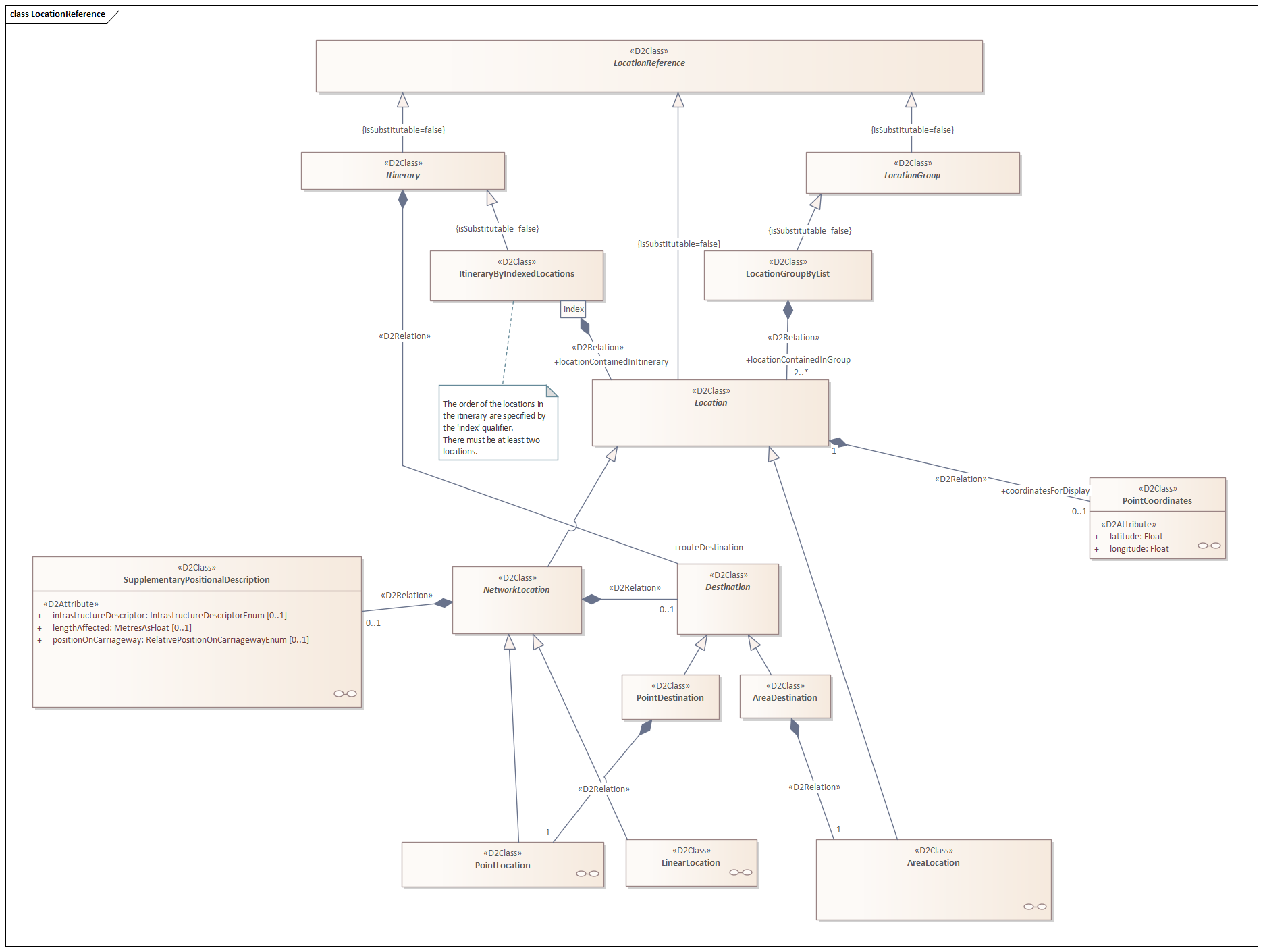LocationReference
The abstract class LocationReference is used to describe one or more physically separate locations. When multiple locations are described within a LocationReference, they may be related, such as in a journey (or route), or they may not be related.
The top-level structure is as follows:
Elementen
| Element | Type | Verplicht | Domein | Omschrijving |
|---|---|---|---|---|
| externalReferencing | ExternalReferencing | No | NVT | A location defined by reference to an external/other referencing system. |
Element externalReferencing
| Element | Type | Verplicht | Domein | Omschrijving |
|---|---|---|---|---|
| externalLocationCode | String | Yes | - | A code in the external referencing system which defines the location |
| externalReferencingSystem | String | Yes | - | Identification of the external/other location referencing system |
Example
Only named instances are included for the abstract class LocationReference. Below is an example of LocationReference within an element measurementSite:
<measurementSiteLocation xsi:type="loc:PointLocation">
..
</measurementSiteLocation>
Specializations
The specializations for LocationReference are indicated through the xsi:type attribute and can be as follows:
| Type: | Description |
|---|---|
| PointLocation | Used when a point location is described. |
| LinearLocation | Used when a segment is described, with the start and end location on the same road. |
| AreaLocation | Used when an area is described. |
| ItineraryByIndexedLocations | This specialization is applied in route locations in Situation Messages and when the location description consists of two or more locations that together form a route. This type is also applied when describing a diversion route. |
